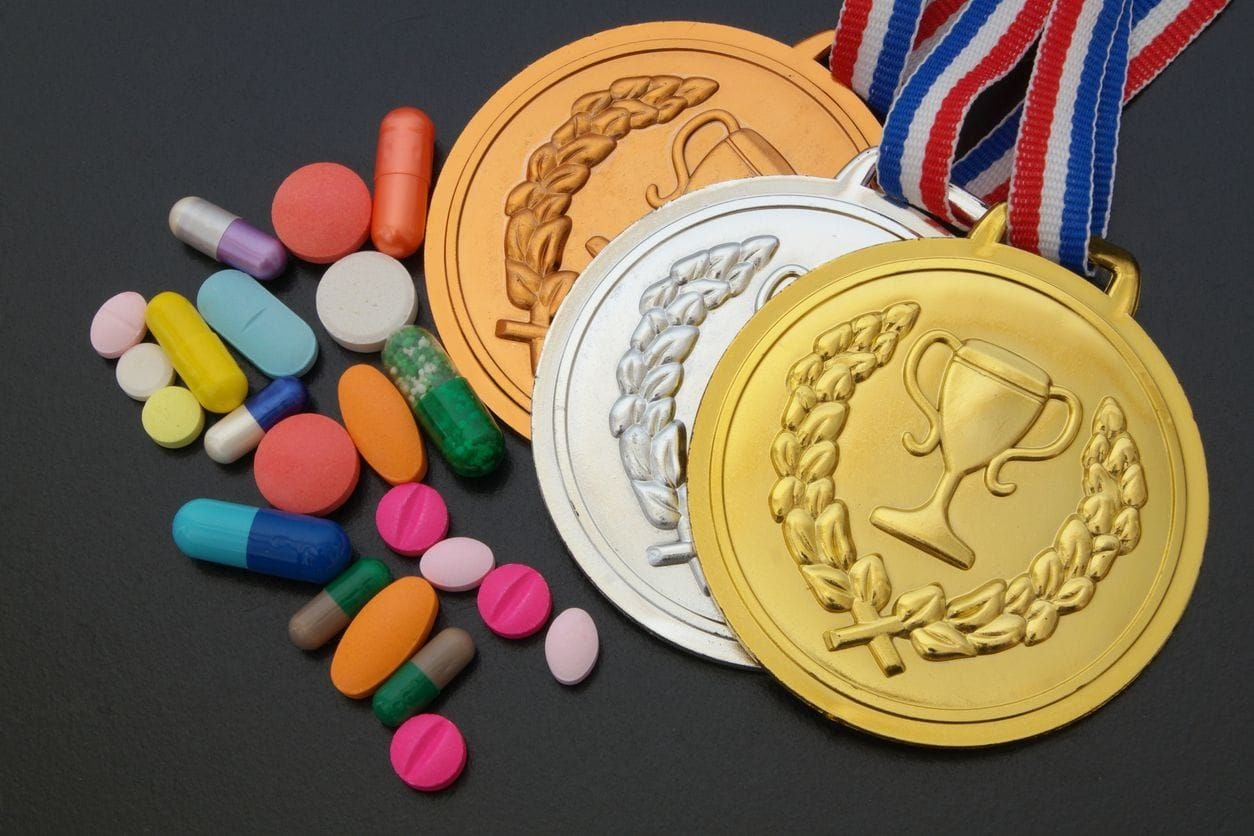Age-group athletes: Could you be the next to face a surprise drug test?
)
Should we bury our heads in the sand and pretend that no one cheats?
You might not be an elite athlete, but you probably count yourself as a fairly competitive age-grouper. In fact, there are increasingly more competitive opportunities for athletes in the masters’ (>35 years) cohort across almost every sport in Australia, with major events including the Australian, Pan-Pacific and World Masters Games.
Not surprisingly, the world governing bodies in a number of sporting codes now target age-group competitors for drug testing, not simply elite athletes. Regardless of your status as an elite or age-group athlete, if you are a member of a national governing body (e.g., Triathlon Australia, Athletics Australia) and/or compete in a World Anti-Doping Agency (WADA)-sanctioned event (e.g., Ironman), you can be tested for any substance on the WADA's prohibited list.
To be fair, very little is known about competitive recreational athletes’ use of performance-enhancing drugs. Studies are scant, and those that do exist have typically examined the use of anabolic steroids in gym and fitness environments where there is general acknowledgement of an existing problem (Christiansen, 2020; Sagoe & Pallesen, 2018).
Budgets allocated to drug-testing are the remit of individual sporting organisations. In the absence of a limitless cash flow, investment in drug-testing is typically focused on leading athletes who are striving for titles and money, rather than up-and-coming age groupers. Yet, so-called non-professional or sub-elite or age-group athletes are not free of controversy.
"It is targeted testing, based on intelligence, that often proves more effective than random in-competition testing." Lacke & Heming (2024)
Over the last decade, there have been cases in cycling, athletics, and triathlon where age-group athletes have failed drug tests and subsequently been stripped of records and medals, with significant sanctions imposed upon them (refer below). It seems highly likely that most of these cases have been revealed through “snitch” programs, whereby athletes and support personnel can send anonymous tips to a relevant governing body with information or evidence pertaining to potential antidoping infractions or behaviour of suspected athletes.
Australian national doping policy
Most sporting organisations in Australia have approved Sport Integrity Australia’s Australian National Anti-Doping Policy as the anti-doping policy for their sport. Sports Integrity Australia is Australia’s national anti-doping organisation. It was established in 2020 by bringing together the Australian Sports Anti-Doping Authority (ASADA), the National Integrity of Sport Unit (NISU) and the national integrity programs of Sport Australia. Sports Integrity Australia collaborates with the WADA, international anti-doping organisations and other stakeholders to implement anti-doping arrangements in accordance with the principles of the World Anti-Doping Code.
Drug-testing standards
The following standards apply to all athletes who are members of a state or national governing body, irrespective of their elite status. Sports Integrity Australia can:
- test athletes either in-competition or out-of-competition;
- conduct tests at an athlete’s training venue of home address;
- implement testing with No Advance Notice; and
- undertake sample collection which can include the collection of urine, blood or both.
Drug testing in non-professional sports in Australia is not new; for example, the Australian Football League (AFL) has occasionally contracted Sports Integrity Australia (formerly ASADA) to conduct tests at suburban football matches. In 2015, for the first time, Triathlon Australia (TA) conducted anti-doping testing on age group athletes at several events. This entailed taking blood and urine samples at the Mooloolaba Triathlon and the Ironman Asia Pacific Championships in Melbourne. The tests were in line with TA's newly released Anti-Doping Policy at that time.
How familiar are you with WADA's list of banned substances?
WADA undertakes a review of its list of prohibited substances and methods on an annual basis. This involves an initial meeting in January followed by an extensive consultation process led by WADA’s List Expert Advisory Group and concludes with the publication of the revised List by 1 October. The List is released three months ahead of it taking effect so that athletes and their support personnel can acquaint themselves with any modifications. Some medications require a Therapuetic Use Exemption approval, some are banned only during competition, and some are banned at all times.
For a substance to be added to the list, it must be determined that it meets at least two of the following three criteria:
- It has the potential to enhance sport performance
- It represents an actual or potential health risk to the athletes
- It violates the spirit of sport
The 2024 WADA Prohibited List of Substances and Methods came into force on 1 January 2024. An overview is available on the Sport Integrity Australia website: 2024 Prohibited List. The full list is here: WADA 2024 Prohibited List of Substances and Methods
Many age-group athletes are probably not aware that there are some fairly common medications - both over-the-counter and prescription drugs - included in the banned list of substances. These include medications prescribed by doctors to treat medical conditions such as asthma, diabetes and blood pressure; for example: Insulin, beta-2 agonists (except therapeutic doses of salbutamol, formoterol and salmeterol), and diuretics.
Even some regular, over-the-counter cold and flu medications now pose a risk for the competitive age-grouper. For example, some common ingredients of cold and flu treatments are banned during competition, such as pseudophedrine and levmetamfetamine. In addition, tainted sports and dietary supplements that contain elements of banned substances will also trigger a positive drug test.
Therapeutic doses of prohibited substances may be acceptable but only if you have applied for a Therapeutic Use Exemption (TUE). Refer below for more information.
Ignorance is no excuse
Age-group athletes, be warned. The Australian National Anti-Doping Policy contains a clear warning to athletes and athlete support personnel at the very top of their web page. The following dot points stand out:
- You are responsible for knowing what the anti-doping rule violations are.
- You must find out which substances and methods are prohibited.
- Ignorance is no excuse.
- Athletes are responsible for anything found in their system.
Most people are fine with the intention of WADA and national sporting bodies to improve the integrity of the sport. However, while all athletes are expected to be familiar with the current code, the Anti-Doping Policy is a complex resource. Hence, points of uncertainty are likely to emerge for the non-professional athlete unfamiliar with drug-testing procedures or how even their own medication management could be breaching the rules.
Sport Integrity Australia provides advice for age-group and Master athletes: Tips for Masters to avoid sport integrity pitfalls.
Steps you can take to prevent an unintentional breach of anti-doping policy
If you are a competitive age-group athlete, it is important for you to be familiar with sport integrity matters. Here is a useful infographic with a summary of tips to prevent unintentional anti-doping breaches.

Links
- Sport Integrity app
- Global Drug Reference Online (DRO)
- How to use the global DRO to check substances
- Therapuetic Use Exemption (TUE)
In the best interests of the athlete
The overarching principle of the drug-testing policy is to look after the health of the athlete.
The risks of illicit substances such as anabolic steroids and stimulants are well documented (Angell et al., 2012). The dangerous side effects of erythropoietin (EPO) or blood doping are also well-documented, especially in cycling, and the sport recognises the impact this is having on amateur cyclists (Doyle, 2017).
In contrast, many athletes with common medical problems may be ignorant of the potential risks associated with exercising while on some medications. For example, beta blockers prescribed for hypertension or heart arrhythmias can impair your temperature regulation during prolonged exercise, predisposing you to dehydration and hyperthermia. Familiarity with drug testing protocol actually helps raise awareness among athletes of the risks of training and racing while on 'regular' therapeutic medications.
In conclusion, drug testing in sports is essential for ensuring fair competition, athlete safety, and the integrity of sports. Drug testing also protects athletes' health by identifying harmful substances that could cause long-term physical and psychological damage.
---
Reported cases of drug doping in so-called sub-elite or age-group athletes
2016
Two dopers still listed in WMA world outdoor results nearly two years later: in 2016, two high jumpers, one from Ukraine and one from Australia, failed doping tests and subsequently received four-year suspensions, leading to the reallocation of high jump medals for the 2016 Perth outdoor World Masters Athletics Championships
2018
Doped up: Fourth amateur Masters cyclist caught in same race on huge EPO cocktail: in July 2018, a 42-year-old male cyclist from Miami received a four-year ban after testing positive for EPO, anabolic steroids and testosterone metabolites.
Ironman confirm three age-group doping positives from Kona 2018: the three triathletes, a F45-49 from Brazil, a M50-54 from Argentina and a M45-49 from Costa Rica were issued with four-year doping bans following testing at the 2018 Ironman World Championships. The banned substances included multiple anabolic steroids , EPO, and CERA.
2019
Masters world record-holder receives four-year doping ban: at the 2019 United States Masters Championships, the men’s 45+ 10,000 m runner and world record holder received a four-year ban after testing positive for anabolic steroids
Australian triathlete banned after testing positive to EPO: an Australian age-group competitor outside the elite divisions who finished second in the M35-39 Sprint Triathlon World Championships in September 2018 was banned for four years after testing for EPO. In this case, he had also competed in another race at the championships, as a guide to a visually impaired athlete who was also disqualified from his race as a result of the positive test (which cost that athlete valuable points towards Paralympic selection).
World champion thrower at Torun gets 4-year suspension for doping: in December 2019, Latvian javelin M35 world champion tested positive for “a prohibited substance, its metabolites or markers” and was given a four-year suspension.
2021
USADA busts masters racer for 10 banned drugs: in April 2021, a 52-year-old cyclist from California received a 4-year ban for possession and use and/or attempted use of 10 different prohibited substances, including anabolic steroids and growth hormones.
2024
72-year-old runner receives three-year doping ban for multiple substances: in June 2024, the men’s 70+ one-mile American record holder was suspended for three years after testing positive at the 2024 United States Masters Track and Field Championships in February for multiple prohibited substances, including amphetamine and nandrolone and testosterone.
---
References
Angell PJ, Chester N, Sculthorpe N, et al. (2012). Performance enhancing drug abuse and cardiovascular risk in athletes: implications for the clinician. British Journal of Sports Medicine 2012;46:i78-i84. https://bjsm.bmj.com/content/46/Suppl_1/i78
Christiansen AV. (2020). Gym culture, identity and performance-enhancing drugs: Tracing a typology of steroid use. Oxon: Routledge
Doyle, K. (2017). How blood doping poses dangers to amateur cyclists. Men’s Journal. https://www.mensjournal.com/health-fitness/how-blood-doping-poses-dangers-to-amateur-cyclists-20150331
Lacke s & Heming T (2024, 7 Aug). How drug testing works in triathlon. Triathlete.com. https://www.triathlete.com/culture/how-drug-testing-works-in-triathlon/
Orr R, Grassmayr M, Macniven R, et al. (2018). Australian athletes’ knowledge of the WADA Prohibited Substances List and performance enhancing substances. International Journal of Drug Policy, 56: 40-45. https://www.sciencedirect.com/science/article/abs/pii/S0955395918300641
ProCon.org. (2024, January 30). Historical Timeline. ProCon.org. https://sportsanddrugs.procon.org/historical-timeline
| Tags:Drugs in SportMost PopularHeart Health for AthletesHH4AMaster Athlete Toolkit |

)